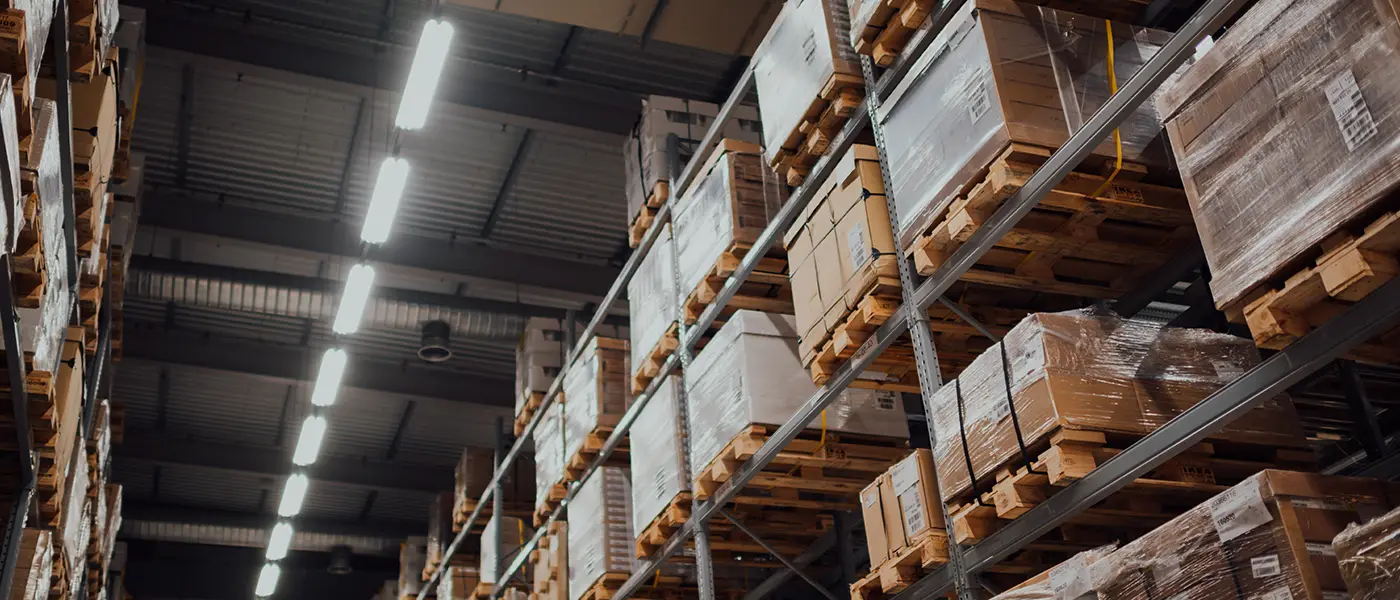Logistics is the management of resources, including how they are obtained, kept, and then transferred to their final location. In the e-commerce business, the term “logistics” is used to describe how resources move along the supply chain.
Efficient logistics management plays a vital role in the success of any business. However, several challenges can hinder the smooth flow of operations. These may range from rising freight costs to encountering shipping and logistics challenges that lead to damage of goods-in-transit. In fact, one of the most significant logistics problems occurred in 2021 when over $9.6 billion worth of goods were held up due to the Suez Canal blockage.
This blog highlights some of the other common logistics problems faced by e-commerce businesses today and explores ways to overcome them. Additionally, it delves into the importance of embracing sustainable practices to address environmental concerns and improve overall supply chain efficiency.
Common Logistics Problems
If you are wondering what are the major problems in logistics, then read along as we explore what they are. Moreover, we have listed solutions to these problems to help you increase business efficiency and implement any solutions that may suit you best.
Rising Freight Costs
The escalating cost of freight transportation is a pressing concern for e-commerce businesses of all sizes. And while they remain at a comfortable average of $1700 on the global freight index, fluctuating fuel prices, capacity constraints, and increasing demand continue to contribute to this logistics challenge.
To mitigate rising freight costs, businesses can adopt several strategies, including:
- Utilizing transportation optimization software to streamline routes and minimize empty miles.
- Consolidating shipments to take advantage of economies of scale.
- Collaborating with logistics partners to negotiate favorable pricing and secure long-term contracts.
- Exploring alternative transportation modes, such as rail or intermodal, to reduce reliance on road transport.
Labor and Shipping Shortages
In recent years, the logistics industry, e-commerce or otherwise, has faced significant labor shortages, affecting both warehouse processes and the availability of skilled truck drivers. To address this problem, businesses can consider the following approaches:
- Investing in automation and robotics to enhance efficiency and reduce reliance on manual labor, or hiring a 3PL agency to outsource labor and shipping.
- Partnering with staffing agencies and implementing competitive employee incentive programs to attract and retain talent.
- Providing comprehensive training programs to upskill existing employees and bridge the skills gap.
- Exploring collaborations with universities or vocational schools to nurture a pipeline of future logistics professionals.
Inefficient employee management
Effective employee management is vital for optimizing logistics operations within the e-commerce domain. This is because the subsequent poor communication, inadequate training, and inefficient workflow processes can greatly hinder productivity. To enhance employee management:
- Implement clear communication channels and foster a culture of transparency.
- Provide comprehensive training programs to ensure employees are equipped with the necessary skills and knowledge.
- Streamline workflows by utilizing digital tools and software solutions for task allocation, performance tracking, and reporting.
- Encourage employee feedback and create opportunities for professional development and growth.
Damaged goods during transportation
Damage to goods during transit can result in financial losses and erode customer trust. Insufficient packaging, inadequate handling procedures, and subpar carrier services are common contributors to this problem. E-commerce businesses can take proactive measures to minimize such incidents:
- Invest in high-quality packaging materials and consider customizing packaging for specific products.
- Collaborate closely with e-commerce carriers to establish clear guidelines for handling and securing goods.
- Implement robust quality control procedures at every stage of the supply chain.
- Use sensors and IoT technology to monitor environmental conditions and detect any abnormalities that could lead to damage.
Inaccurate inventory reporting
Inaccuracy in reporting inventory can lead to stockouts, overstocking, delayed orders, and dissatisfied customers. This is one of the less-discussed e-commerce logistics problems. However, it has a grave impact on business efficiency. So to improve inventory accuracy:
- Adopt an inventory management system that integrates real-time data from various sources.
- Implement regular cycle counts and reconciliation processes to identify and rectify discrepancies promptly.
- Utilize barcode scanning or RFID technology to automate inventory tracking and reduce human error.
- Foster collaboration and data-sharing between different departments involved in the supply chain to ensure accurate inventory information.
Unclear tracking and visibility into the status of shipments
Lack of visibility into the status of your online business shipments can result in delays, customer complaints, and lost opportunities. Moreover, limited visibility makes it difficult to identify delays, respond proactively to disruptions, and provide accurate delivery estimates.
To enhance tracking and visibility:
- Utilize e-commerce-focused Transportation Management Systems (TMS) to track shipments in real time.
- Collaborate with carriers to obtain timely updates and share tracking information with customers.
- Implement robust communication channels to keep customers informed about their shipment status.
- Leverage blockchain technology for secure and transparent sharing of shipment data across the supply chain.
Warehouse Management Errors
Errors in warehouse management in an e-commerce business can result in order picking mistakes, misplaced inventory, inefficient space utilization, and delayed order processing. These errors can, in turn, disrupt logistics operations and hinder productivity.
By addressing these errors, businesses can enhance efficiency and improve customer satisfaction. Consider the following solutions:
- Optimize warehouse layout and space utilization by analyzing the flow of goods, implementing slotting strategies, and maximizing vertical space.
- Implement warehouse management systems to provide real-time visibility into stock levels and streamline processes.
- Utilize barcode scanning or RFID technology for accurate and efficient tracking of inventory.
- Enhance training programs for warehouse staff, covering equipment operation, safety procedures, and best practices.
- Conduct regular safety audits and inspections to identify and mitigate potential hazards.
- Standardize picking and packing processes, utilizing efficient methods like batch picking or zone picking.
Technical difficulties
Technology is the backbone of an e-commerce business. Nevertheless, technological challenges, such as system downtime, software glitches, and integration issues, can always occur and disrupt logistics operations, leading to delays.
Therefore, it is crucial to have a reliable IT infrastructure and contingency plans in place to address technical difficulties promptly. Consider the following solutions:
- Implement backup and disaster recovery plans to safeguard critical data and systems.
- Regularly update and maintain software and hardware to stay up-to-date with technology advancements.
- Leverage data analytics for predictive maintenance and problem identification, allowing for proactive troubleshooting.
- Collaborate with IT experts and technology partners for support and guidance in managing technical challenges.
Embracing Sustainable
Sustainability has become a critical focus in e-commerce logistics as businesses strive to reduce their environmental impact and improve long-term viability. However, it is a relatively new concept and most businesses have only started dipping their toes into sustainable practices very recently.
If you are one of them, consider the following solutions to achieve sustainability:
- Optimize transportation routes, consolidate shipments, and incorporate electric vehicles to minimize fuel consumption and reduce emissions.
- Implement green packaging materials and practices, such as using recycled or biodegradable materials.
- Embrace circular supply chain models that prioritize recycling, reusing, and reducing waste.
- Collaborate with eco-friendly suppliers and partners who share similar sustainability goals and invest in energy-efficient technologies.
- Conduct regular sustainability audits to identify areas for improvement and set measurable sustainability targets.
Conclusion
While e-commerce logistics problems are essentially unavoidable, businesses can always take the time to optimize processes to reduce them. A combination of awareness, resourcefulness, and accountability can not only save you time and money but also ensure customer satisfaction. This can be a driving force in propelling your business and its profitability forward.
Moreover, partnering with a logistics company such as Locad can help you avoid problems associated with third-party logistics. In fact, we take care of all your e-commerce shipping, picking, packing, and storage needs and ensure absolutely minimal logistics challenges.
Sign up with Locad today and experience an efficient workflow like never before!
FAQs
What is the biggest risk in logistics?
There are many risks associated with e-commerce logistics. However, some of the biggest risks are supply chain disruptions, labor shortages, and political and government changes.
How do you solve logistic problems?
Logistics challenges can be solved through a combination of employing advanced technology, establishing proper communication channels, and demarcating standards for the workforce within the supply chain.
What are the factors affecting customer satisfaction in logistics?
Factors affecting customer satisfaction in e-commerce include on-time delivery, accurate order fulfillment, proactive communication, responsive customer service, transparent tracking, and visibility, effective problem resolution, and overall service reliability.
How can logistics improve customer experience?
Logistics can improve customer experience by ensuring timely and accurate deliveries, providing tracking and visibility, offering proactive communication, optimizing order fulfillment processes, and delivering exceptional customer service.
What is lead time?
Lead time is the time taken by goods or services to be shipped from origin to destination. It is one of the most crucial factors in inventory management and any business activity.






